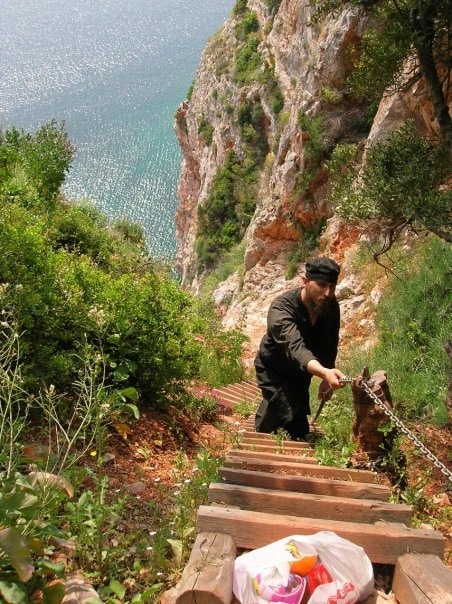Install the app
How to install the app on iOS
Follow along with the video below to see how to install our site as a web app on your home screen.

Note: This feature currently requires accessing the site using the built-in Safari browser.
You are using an out of date browser. It may not display this or other websites correctly.
You should upgrade or use an alternative browser.
You should upgrade or use an alternative browser.
Mt Athos, The last of Byzantines or Where Byzantium still exist.
- Thread starter Yetos
- Start date
Yetos
Regular Member
- Messages
- 5,959
- Reaction score
- 519
- Points
- 113
- Location
- Makedonia
- Ethnic group
- Makedonian original
- Y-DNA haplogroup
- G2a3a
- mtDNA haplogroup
- X2b
Lots of times I Agreed and disagree with monks,
they have their own way of life,
I ve been visiting from 1989
At that times all distances were by foot,
No roads, few cars, NO ELECTRICITY, etc etc,
''me and my house'' (not me offcourse)

they have their own way of life,
I ve been visiting from 1989
At that times all distances were by foot,
No roads, few cars, NO ELECTRICITY, etc etc,
''me and my house'' (not me offcourse)
Yetos
Regular Member
- Messages
- 5,959
- Reaction score
- 519
- Points
- 113
- Location
- Makedonia
- Ethnic group
- Makedonian original
- Y-DNA haplogroup
- G2a3a
- mtDNA haplogroup
- X2b
the place name is Karoulia. at the deep south of peninsula,
this a skete, a kind of village for monks,
Most caves are also houses and small churches


this a skete, a kind of village for monks,
Most caves are also houses and small churches
bigsnake49
Regular Member
- Messages
- 1,802
- Reaction score
- 402
- Points
- 83
- Ethnic group
- Thracian
- Y-DNA haplogroup
- R-PF7558 (LDNA)
- mtDNA haplogroup
- U5a1b
Living in the Mount Athos caves reminds me of the Matala caves in Crete where the hippies lived in the 70s.
Angela
Elite member
- Messages
- 21,823
- Reaction score
- 12,329
- Points
- 113
- Ethnic group
- Italian
again karoulia, where people live like the birds



Is that a woman? I thought the monks prohibited women from going anywhere near the monasteries?
If women can go, I want to go.
bigsnake49
Regular Member
- Messages
- 1,802
- Reaction score
- 402
- Points
- 83
- Ethnic group
- Thracian
- Y-DNA haplogroup
- R-PF7558 (LDNA)
- mtDNA haplogroup
- U5a1b
Is that a woman? I thought the monks prohibited women from going anywhere near the monasteries?
If women can go, I want to go.Do you go up by mule track? That would be fine. I went all the way to the bottom of the Grand Canyon on these small, sure footed horses. First time I went to the Canyon I went on foot even though the guide told me they lost walkers, but never horses!
Second time I was more brave.
That woman has an awfully long red beard
Angela
Elite member
- Messages
- 21,823
- Reaction score
- 12,329
- Points
- 113
- Ethnic group
- Italian
Reminds me a bit of Matera, but the caves aren't as high up, the access is easier, and the views aren't as spectacular.

How things change...It was a place of abject poverty and squalor, and now we pay to stay there.
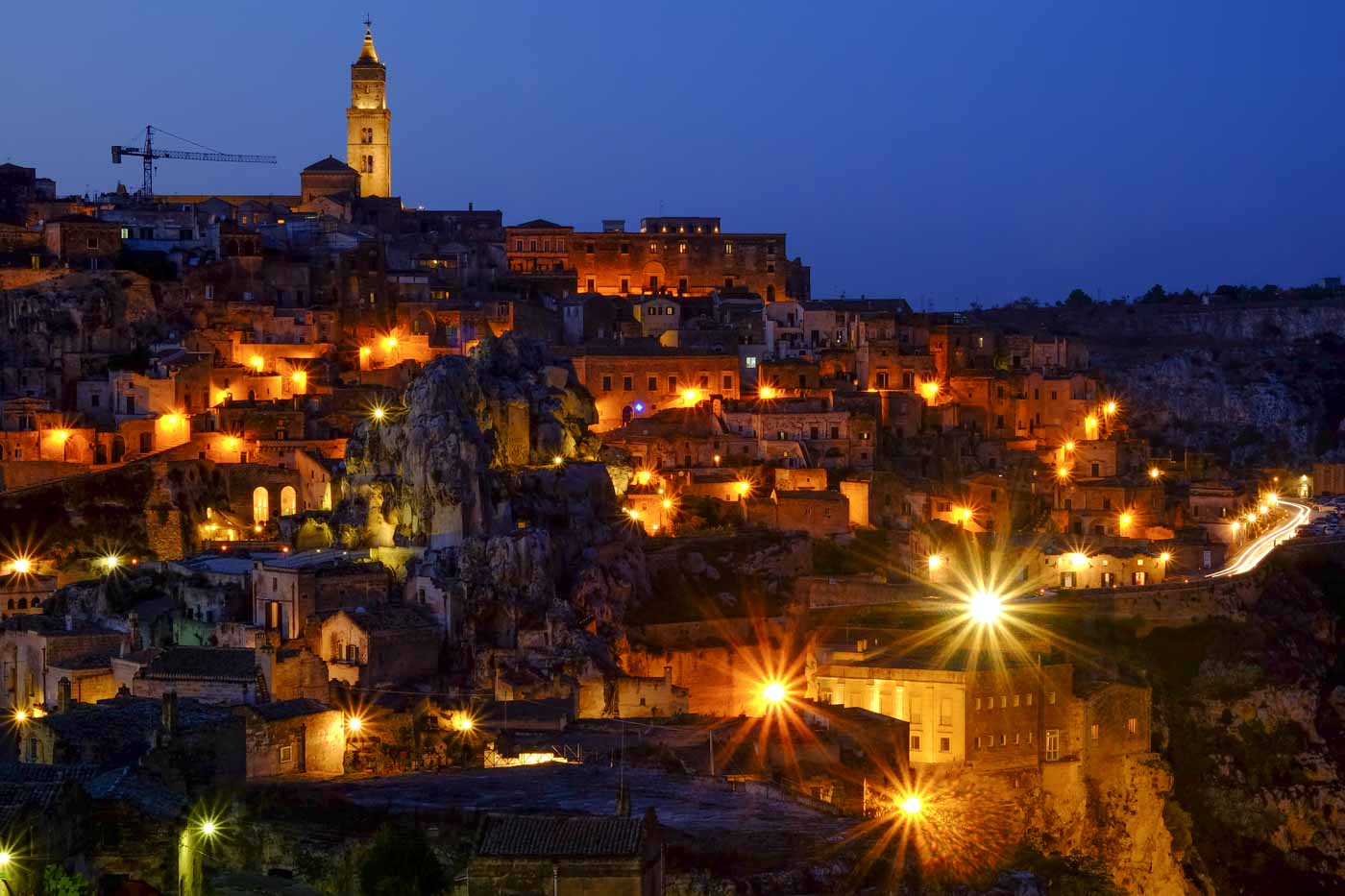
Truly, the place where Christ never reached.
(Christ stopped at Eboli-Carlo Levi)

How things change...It was a place of abject poverty and squalor, and now we pay to stay there.

Truly, the place where Christ never reached.
(Christ stopped at Eboli-Carlo Levi)
Yetos
Regular Member
- Messages
- 5,959
- Reaction score
- 519
- Points
- 113
- Location
- Makedonia
- Ethnic group
- Makedonian original
- Y-DNA haplogroup
- G2a3a
- mtDNA haplogroup
- X2b
Supplies transfer, 2 times per week at summer, 1 in winter

he descents, maybe he brings water to his cottage, usually 20-40-60 for a week for all demands,


he descents, maybe he brings water to his cottage, usually 20-40-60 for a week for all demands,
Yetos
Regular Member
- Messages
- 5,959
- Reaction score
- 519
- Points
- 113
- Location
- Makedonia
- Ethnic group
- Makedonian original
- Y-DNA haplogroup
- G2a3a
- mtDNA haplogroup
- X2b
this is papa stefanos, at 90;s I make an effort to reach his cabin
do not know what blessings he had, bu he manage to grow flowers and strawberries at the desrt.
he was of Serbian origin,
few years later he passed away,
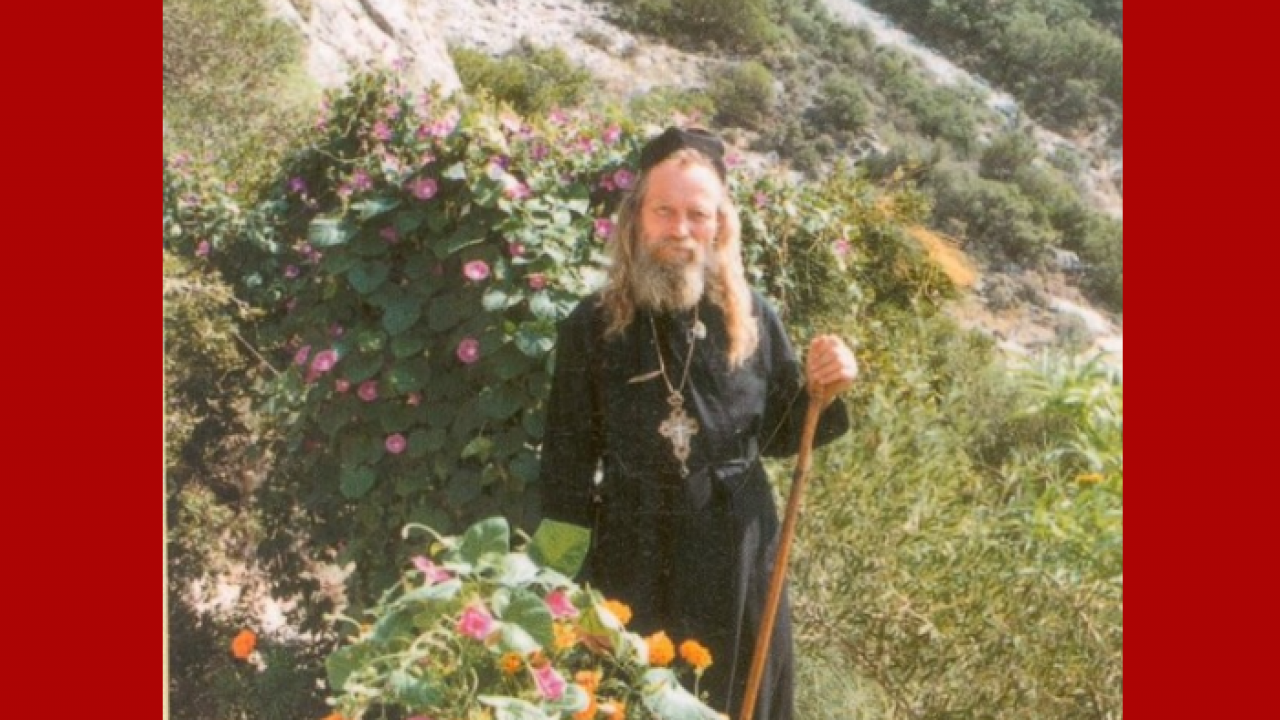
do not know what blessings he had, bu he manage to grow flowers and strawberries at the desrt.
he was of Serbian origin,
few years later he passed away,

Yetos
Regular Member
- Messages
- 5,959
- Reaction score
- 519
- Points
- 113
- Location
- Makedonia
- Ethnic group
- Makedonian original
- Y-DNA haplogroup
- G2a3a
- mtDNA haplogroup
- X2b
Mt Athos BIG DESERT, land of the HERMITS ERIMITES
the first monks of christianity appear at Egypt, at desrt, Antonios the great as they named is considered the father of Monachismos.
then when islam expand at Egypt, they start to choose other places, first was Kappadokia, in Today Turkey,
other was the desert of mt Athos, they called desert cause the water is rare here with little rainfalls, comparing other areas of Athos.
Meteora in Greece, and I heard about Amalfi and Benedecto in Italy,
The desert mainly is divided to 3 smaller 'villages'
Kausokalybia Kafsokalibia which means cabins burned in Sun,
Katounakia, means rocky/stone cover small narrow streets, and vilage in Epirus Sterea and Arbanitika, Danielaioi dwells is also such and near.
and Karoylia, means reel and trundle. also called FREAKY karoulia, especially the big one,
a photo from Katoynakia
Yes Angela, this and many cities in S Italy share some common but not Karoylia, Karoylia is Unigue,

and Kausokalybia

the first monks of christianity appear at Egypt, at desrt, Antonios the great as they named is considered the father of Monachismos.
then when islam expand at Egypt, they start to choose other places, first was Kappadokia, in Today Turkey,
other was the desert of mt Athos, they called desert cause the water is rare here with little rainfalls, comparing other areas of Athos.
Meteora in Greece, and I heard about Amalfi and Benedecto in Italy,
The desert mainly is divided to 3 smaller 'villages'
Kausokalybia Kafsokalibia which means cabins burned in Sun,
Katounakia, means rocky/stone cover small narrow streets, and vilage in Epirus Sterea and Arbanitika, Danielaioi dwells is also such and near.
and Karoylia, means reel and trundle. also called FREAKY karoulia, especially the big one,
a photo from Katoynakia
Yes Angela, this and many cities in S Italy share some common but not Karoylia, Karoylia is Unigue,

and Kausokalybia

Yetos
Regular Member
- Messages
- 5,959
- Reaction score
- 519
- Points
- 113
- Location
- Makedonia
- Ethnic group
- Makedonian original
- Y-DNA haplogroup
- G2a3a
- mtDNA haplogroup
- X2b
I walked almost half of peninsula at 90-97,
First electric attempts were at 1994, in some easy approach monasteries,
At Desert monks had to carry water, while the few small springs, or drop by drop gaher areas are called Agiasma, meaning Holly,
imagine how holly for life the few drops of water,
First electric attempts were at 1994, in some easy approach monasteries,
At Desert monks had to carry water, while the few small springs, or drop by drop gaher areas are called Agiasma, meaning Holly,
imagine how holly for life the few drops of water,
Yetos
Regular Member
- Messages
- 5,959
- Reaction score
- 519
- Points
- 113
- Location
- Makedonia
- Ethnic group
- Makedonian original
- Y-DNA haplogroup
- G2a3a
- mtDNA haplogroup
- X2b
Angela never been in Grand Canyon, but surely is bigger, I guess, it is considered a natural wonder
the toughest challange i had was at Agia Anna Saint Anne, from 0 sea lvl to 650 mt height by ealking about 2-2,5 km km,
the passage from Filotheos monastery to Simonos Petra through the water falls.
but the most FREAKY is Karoylia,
NO WOMEN ARE PROHIBITED, at 500 from the shores,
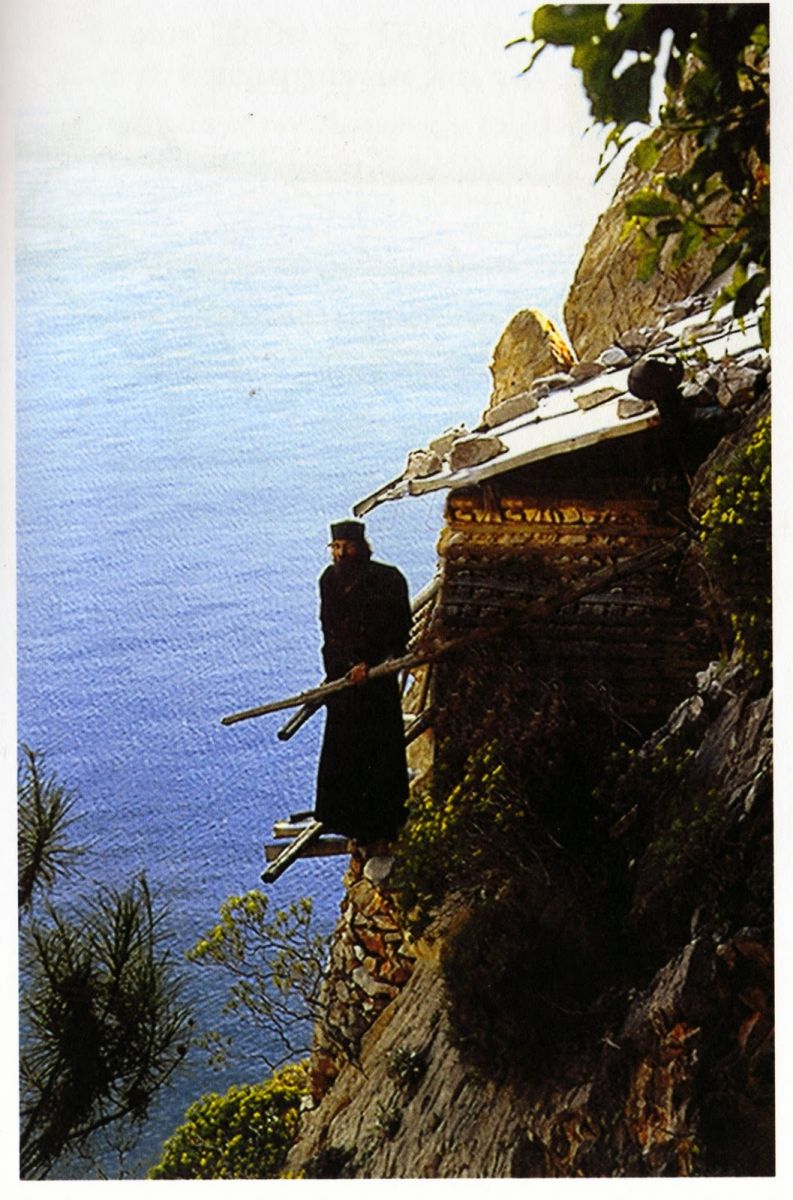
the toughest challange i had was at Agia Anna Saint Anne, from 0 sea lvl to 650 mt height by ealking about 2-2,5 km km,
the passage from Filotheos monastery to Simonos Petra through the water falls.
but the most FREAKY is Karoylia,
NO WOMEN ARE PROHIBITED, at 500 from the shores,

Last edited:
Yetos
Regular Member
- Messages
- 5,959
- Reaction score
- 519
- Points
- 113
- Location
- Makedonia
- Ethnic group
- Makedonian original
- Y-DNA haplogroup
- G2a3a
- mtDNA haplogroup
- X2b
@ angela
surely you did not expect to do this to go to your house, or to visit a place
the video is from visitors, trying to go down at megalo Karoyli
surely you did not expect to do this to go to your house, or to visit a place
the video is from visitors, trying to go down at megalo Karoyli
Yetos
Regular Member
- Messages
- 5,959
- Reaction score
- 519
- Points
- 113
- Location
- Makedonia
- Ethnic group
- Makedonian original
- Y-DNA haplogroup
- G2a3a
- mtDNA haplogroup
- X2b
The deset belong to the municipal of Agia Lavra monasteri, Αγια Λαυρα,
Lavra (maybe cognate with English Love) means inner heat/ burn, strong desire, pation, excitement, even greed and glutony and sex.
it is describe as the inner flame that burns human after a strong desire (here is desire for hollines and life after death)
But it has it own rules,
the systems are 3 there, the commonlife at monastery, the small feudal and common of Scetes and the almost free of deep desert, (lonely cells/cabines but must be registered to the monastery).
a good aproach description of how life is at Karoylia and desert,
2 photos and a small video.
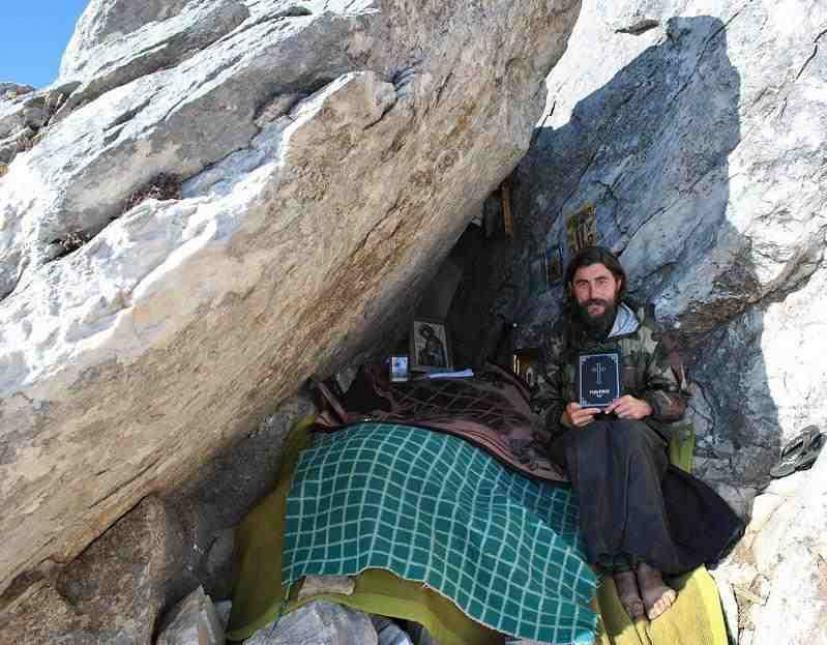
do not know, if he is newcomer, or test himshelf, or passes by on a road to elsewhere, or on a spiritual excersise.
2.

after the burried time 3-5-7 years bones must be extracted from ground, washed with wine (and oil) and return to the cell he lived.
so next owner or habitat inherits the bones of all previous.
an official video for deep desert.
Lavra (maybe cognate with English Love) means inner heat/ burn, strong desire, pation, excitement, even greed and glutony and sex.
it is describe as the inner flame that burns human after a strong desire (here is desire for hollines and life after death)
But it has it own rules,
the systems are 3 there, the commonlife at monastery, the small feudal and common of Scetes and the almost free of deep desert, (lonely cells/cabines but must be registered to the monastery).
a good aproach description of how life is at Karoylia and desert,
2 photos and a small video.

do not know, if he is newcomer, or test himshelf, or passes by on a road to elsewhere, or on a spiritual excersise.
2.

after the burried time 3-5-7 years bones must be extracted from ground, washed with wine (and oil) and return to the cell he lived.
so next owner or habitat inherits the bones of all previous.
an official video for deep desert.
Yetos
Regular Member
- Messages
- 5,959
- Reaction score
- 519
- Points
- 113
- Location
- Makedonia
- Ethnic group
- Makedonian original
- Y-DNA haplogroup
- G2a3a
- mtDNA haplogroup
- X2b
few FAQ
Since 1926, Mount Athos has had the unique status of a theocratic republic, with its own government, elected by the 20 monasteries on the mountain. There are no roads connecting the Holy Mountain with the rest of Greece, ensuring its continuing isolation.
It is governed as an autonomous polity within the Hellenic Republic, namely the monastic community of Mount Athos under the direct jurisdiction of the Ecumenical Patriarch of Constantinople.
Women have been barred from Mount Athos, a sacred sanctuary that has long housed a large community of Eastern Orthodox monks, for more than 1,000 years. To the extent residents can control, even female animals are forbidden: Only male birds chirp in the aviaries; only bulls roam the peninsula's pastures
The monuments are protected by the provisions of the Archaeological Law 3028/2002 “On the Protection of Antiquities and Cultural Heritage in general”, and by separate ministerial decrees published in the Official Government Gazette
In 1924 CE, the Mount Athos Charter granted the mountain and its monasteries independence from Greece
The only way to get into Athos is by ferry. It is absolutely forbidden to enter Athos through land (crossing the fence) or approaching from the sea with your own boat.
Everybody, whether orthodox or not, must obtain a permit called a “Diamonitirion” to enter the Athos peninsula. Make a reservation up to six months in advance, the earlier the better.
Languages: Greek (main language) English ("quite widely spoken") Bulgarian (in Zograf) Romanian (in Lakkoskiti and Prodromos) Russian (in St. Panteleimon) Serbian (in Hilandar)
Stays on Mt Athos are officially limited to four days, so as to provide the opportunity to as many people as possible to visit the peninsula. Approximately 300,000 people ar
T
The monasteries of the monastic community are stauropegic; they are exempt from the authority of the local bishop and only report to the Ecumenical Patriarch of Constantinople.
Since 1926, Mount Athos has had the unique status of a theocratic republic, with its own government, elected by the 20 monasteries on the mountain. There are no roads connecting the Holy Mountain with the rest of Greece, ensuring its continuing isolation.
It is governed as an autonomous polity within the Hellenic Republic, namely the monastic community of Mount Athos under the direct jurisdiction of the Ecumenical Patriarch of Constantinople.
Women have been barred from Mount Athos, a sacred sanctuary that has long housed a large community of Eastern Orthodox monks, for more than 1,000 years. To the extent residents can control, even female animals are forbidden: Only male birds chirp in the aviaries; only bulls roam the peninsula's pastures
The monuments are protected by the provisions of the Archaeological Law 3028/2002 “On the Protection of Antiquities and Cultural Heritage in general”, and by separate ministerial decrees published in the Official Government Gazette
In 1924 CE, the Mount Athos Charter granted the mountain and its monasteries independence from Greece
The only way to get into Athos is by ferry. It is absolutely forbidden to enter Athos through land (crossing the fence) or approaching from the sea with your own boat.
Everybody, whether orthodox or not, must obtain a permit called a “Diamonitirion” to enter the Athos peninsula. Make a reservation up to six months in advance, the earlier the better.
Languages: Greek (main language) English ("quite widely spoken") Bulgarian (in Zograf) Romanian (in Lakkoskiti and Prodromos) Russian (in St. Panteleimon) Serbian (in Hilandar)
Stays on Mt Athos are officially limited to four days, so as to provide the opportunity to as many people as possible to visit the peninsula. Approximately 300,000 people ar
T
The monasteries of the monastic community are stauropegic; they are exempt from the authority of the local bishop and only report to the Ecumenical Patriarch of Constantinople.
This thread has been viewed 6746 times.



